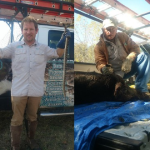One of the most diverse groupings in the animal kingdom, reptiles are fascinating creatures. Their unique skin is composed of scales, scutes (bony plates) or a combination of both. Cold-blooded creatures, they are heavily dependent on the temperature of their environment. Reptiles can carry a variety of diseases that can cause serious illnesses in humans, especially in small children, pregnant women, the elderly and those are already weakened by conditions like cancer.
Reptiles have existed on Earth for hundreds of millions of years. From the fierce dinosaurs to our present-day lizards, snakes, and turtles, these animals are versatile and have found ways to survive and adapt in numerous habitats. As our homes and cities expand, encounters between humans and these cold-blooded creatures are becoming more frequent, causing occasional distress and inconvenience.
Appearance
General Characteristics Reptiles are ectothermic, meaning they rely on the external environment to regulate their body temperature. Most have dry, scaly skin which aids in preventing water loss. They also possess a unique skull structure and most lay hard-shelled eggs, although there are exceptions.
Coloration/Patterns/Distinctive Markings Reptile coloration is often influenced by their habitats, as it helps in camouflage. However, in many reptiles, bright colors can serve as a warning to predators or rivals. Patterns such as stripes, spots, and bands are not only for decoration; they can help break up the outline of the reptile, making it harder for predators to see.
Size/Features Reptiles range vastly in size from tiny geckos to massive crocodiles. The features of a reptile often speak to its habits; for instance, a turtle's shell for protection or a snake's unhingeable jaw to swallow prey whole.
Biology
Digestion and Diet Reptiles have a varied diet ranging from plants to small and large animals. Being ectothermic, reptiles have a slower metabolic rate, which means they can survive on less food than endothermic animals. Their digestive system is adapted to extract maximum nutrients from their food, often over extended periods.
Reproduction Most reptiles lay eggs, although some, like certain species of snakes, give birth to live young. The method and duration of reproduction can vary widely among species. Some reptiles provide no care for their offspring, while others can be surprisingly attentive.
Unique Sensory Systems Many reptiles have keen senses. Snakes, for example, possess heat-sensing organs, and some lizards can detect UV light. The Jacobson's organ in snakes allows them to "taste" the air, gathering information about their surroundings.
Habitat
Preferred Environments Reptiles can be found everywhere from dense forests to arid deserts. Their adaptability has allowed them to colonize a variety of ecosystems around the world, with each species having its preferred environment where it can most successfully find food and reproduce.
Urban Encounters As cities expand, many reptiles have adapted to urban life, leading to increased human-reptile interactions. Gardens, ponds, and even houses can attract reptiles, either as a source of food or shelter.
Temperature Regulation Being ectothermic, reptiles seek out external heat sources to regulate their body temperature. You might often find them basking in the sun or seeking warmth on roads and pavements.
Behavior
Defensive Mechanisms When threatened, reptiles may employ various defense strategies, from camouflage and hiding to hissing, biting, or releasing foul-smelling substances. Some even play dead to deter predators.
Hunting Techniques Reptiles have evolved various hunting techniques, from the ambush tactics of crocodiles and some snakes to the active chasing by monitor lizards. They utilize their keen senses and often lethal weaponry to catch and subdue their prey.
Migratory Patterns While many reptiles are sedentary, some like sea turtles, undertake long migrations for reproduction or to find suitable habitats.
Damage/Problems
Diseases Reptiles can be carriers of diseases like salmonella. These diseases can be transmitted to humans through direct or indirect contact.
Burrowing Many reptiles, especially lizards and tortoises, burrow into the ground. This behavior can cause damage to gardens, lawns, and infrastructure.
Structural Damage Certain reptiles, like large lizards, can cause damage to infrastructure by digging or gnawing. Their nesting habits can also obstruct ventilation systems or cause electrical short circuits.
Reptile Infestations Overpopulation of certain reptiles, like iguanas in specific areas, can cause problems for local ecosystems and residents.
Trapping & Removal
Safe Handling Capturing and handling reptiles requires knowledge and care to ensure the safety of both the human and the animal. Incorrect handling can lead to bites or injury.
Relocation Once captured, many reptiles can be safely relocated to more suitable habitats away from human habitation, ensuring a harmonious coexistence.
Deterrence/Prevention
Property Maintenance Regular maintenance, like sealing gaps and cracks and keeping yards clean, can deter reptiles from taking up residence.
Physical Barriers Installing fences or mesh can prevent larger reptiles from entering certain areas. This can be particularly useful for gardens or ponds.
Exclusion Ensuring that there's no easy access to food or shelter can discourage reptiles. This might involve keeping food sources, like pet food, secure and reducing clutter.
At AAAC Wildlife Removal, we understand the importance of a balanced ecosystem and the place of reptiles in it. However, when these creatures venture too close for comfort, we're here to help. Our trained professionals ensure safe, humane, and effective removal and prevention, ensuring you and the wildlife can coexist peacefully. Don't let reptiles run rampant on your property; contact us today!


















































